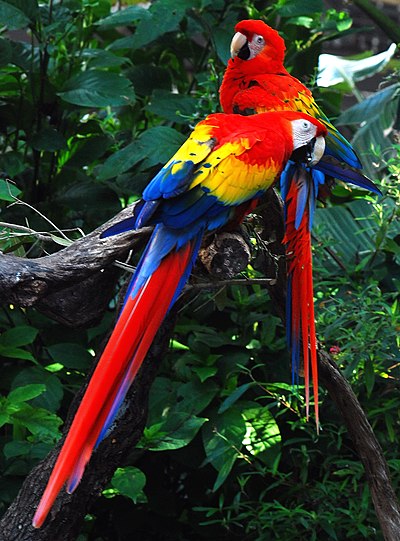 Finally, conservationists and bird enthusiasts have some promising news regarding the fate of wild parrots. Mexico’s recently imposed ban on collecting and exporting wild parrots (please see article below) appears to be having its intended effect. Confiscations are at an all-time low, the public is cooperating, and birds in neighboring Guatemala may be benefitting as well.
Finally, conservationists and bird enthusiasts have some promising news regarding the fate of wild parrots. Mexico’s recently imposed ban on collecting and exporting wild parrots (please see article below) appears to be having its intended effect. Confiscations are at an all-time low, the public is cooperating, and birds in neighboring Guatemala may be benefitting as well.
A Bad Year for Smugglers
Despite increased attention to parrot smuggling, last year (2010) saw only 568 parrots confiscated in Mexico…less than any time in the past decade, and down 1/3 from 2009. As Mexico has long been an outlet for birds illegally trapped in neighboring Guatemala, it is believed that the ban is having a positive effect there as well.
Origins of Mexico’s Ban
Mexico’s ban was largely prompted by a scathing report compiled by the conservation organization Defenders of Wildlife. Studies revealed that 19 of Mexico’s 22 parrot species were severely impacted by trapping, with 65,000 to 78,500 birds captured in most years; as many as 75% of these are believed to have perished in short order.
Some of Mexico’s native parrots, such as the Mexican Parrotlet, the Maroon-Fronted Parrot and the Red-Crowned Amazon, are found nowhere else on earth (please see photos).
Education and Public Support
Realizing the difficulties faced by law enforcement officers in many regions of the country, Defenders of Wildlife also initiated a campaign to enlist public support for the ban on wild-caught parrots. Radio programs, posters and teaching kits have turned many youngsters, and quite a few adults, into staunch parrot protectors, ready and willing to report poachers and illegal sales.
The Future
 Habitat loss is still a problem in Mexico, and exceeds even trapping as a threat to the continued survival of wild parrots throughout Latin America and, indeed, the world. However, each positive step we take is vitally important, and Mexico now serves as a shining example of what can be accomplished in a relatively short time.
Habitat loss is still a problem in Mexico, and exceeds even trapping as a threat to the continued survival of wild parrots throughout Latin America and, indeed, the world. However, each positive step we take is vitally important, and Mexico now serves as a shining example of what can be accomplished in a relatively short time.
Further Reading
Determining if Your Parrot is Legal or Poached
Video: wild Amazon Parrots in Mexico
Red Crowned Amazon image referenced from wikipedia and originally posted by Roger Moore Glandauer
Macaws image referenced from wikipedia and originally posted by Matthew Romack
 That Bird Blog – Bird Care and History for Pet Birds
That Bird Blog – Bird Care and History for Pet Birds




Does Mexico allow the importation of pet Amazon parrots? I can’t seem to locate the answer to this very direct, straight-forward question. I am thinking about moving to Mexico and need to know if I can bring my Yellow-nape Amazon with me?
Hello Robert,
It would seem straightforward, but…
It’s very difficult to get straight answers, unfortunately, and wildlife import regulations change a great deal both here in the Us and elsewhere. I would speak directly to someone in at the regulatory body in Mexico which controls wildlife imports…airline regs are very complicated as well, so be sure to get something in writing from there also. Sorry I could not offer better advice, but I’m not familiar with Mexico’s current regs, best, frank
I am trying to breed Mexican parrotlets in the United States. My primary goal is to eliminate any demand for wild-caught and illegally imported birds. My dream would be reintroduction of the forpus cyanopygius to its previous northernmost range in SE Arizona.
Any information regarding other breeders or where Mexican parrotlets could be obtained would be greatly appreciated.
Eve